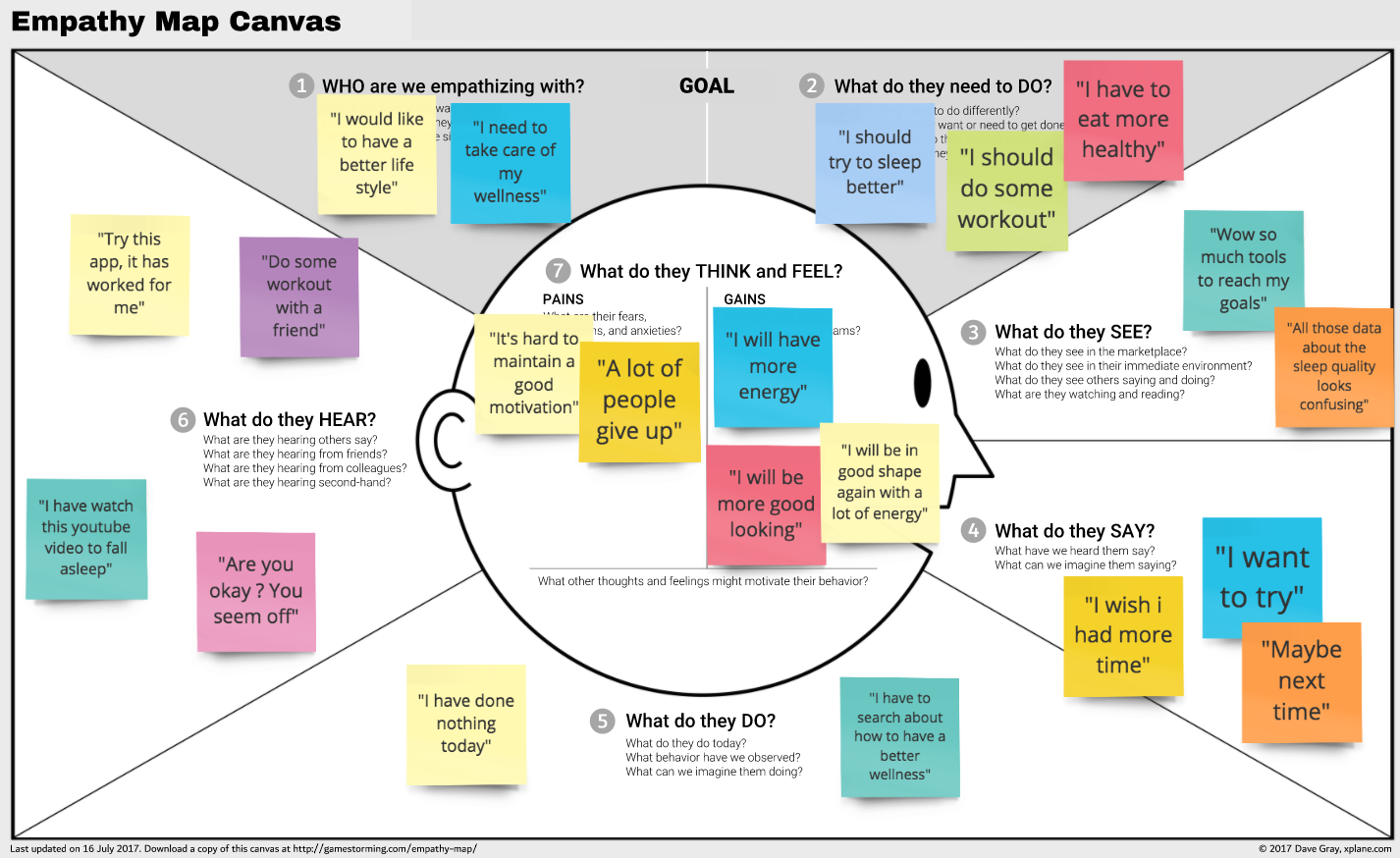Design Thinking
Experiential Education

Objectives
What you will learn:
- What is design thinking
- The 5 stages of design thinking
- Some strategies, tools and resources for effective design thinking

Introduction
At some point in your Associate Degree program you may come across an opportunity to engage in design thinking. If not at university, quite likely it will happen in some form or another in your workplace. This module explores the innovative and creative approach being used for the design of products, services and business development.
What is Design Thinking?
In simple terms design thinking is a solution-based approach that involves ‘thinking’ like a designer, whether you are managing or creating (Think360 2016). What’s worth noting is that you are not being asked to ‘be’ a designer, but to ‘think’ like one!
This ‘thinking’, and methodology, involves understanding the user (that is, the customer or client), identifying challenges, and coming up with creative solutions to tackle problems (Interaction Design Foundation n.d.).
Tim Brown, one of the design thinking pioneers, defines design thinking as
a discipline that uses the designer’s sensibility and methods to match people’s needs with what is technologically feasible and what a viable business strategy can convert into customer value and market opportunity.
Some key characteristics that define design thinking include:
- A human-centric approach; that is, what is the user-experience
- The use of imagination, intuition and empathy
- Collaboration
- Combining creativity and logic
- Experimentation and prototyping; creating a ‘working demo’
- It is dynamic and iterative
(Digital Transformations 2016; Dam & Siang 2018)

What is the backstory on Design Thinking – When, Where and Why did it originate?
According to WIRED (2018), design thinking emerged out of the failure of corporations to be creative and innovative around customer needs and problem-solving. In short, companies doing the same old things in the same old ways and losing customers as a result. For examples of design thinking in action, click on the link below:
3 Great Examples of Design Thinking in Action
Tim Brown and Roger Martin, recognised pioneers of design thinking and CEOs of IDEO, a global design and innovation company, helped transform the thinking about the word ‘design’ as a noun to using it as a ‘verb’. What this means is that the problem-solving approach is iterative and dynamic. Brown describes organisations dominated by analytical thinking only, as inflexible and resistant to change, whereas those that are more innovative and adaptive use both analytical and creative thinking in ‘dynamic interplay’ (cited in Board Business 2018).

The Design Thinking Process
We identify here each stage of the design thinking process, detailing some of the thoughts and actions that are taken during each stage. Resources and videos are provided along the way.
EMPATHISE
The first step is empathy, which involves understanding the problem you are trying to solve (context) and understanding the experiences and motivations of the customer/user. It involves asking questions such as:
- What are the user’s physical and emotional needs?
- How does the user think about the world?
- What does the user care about? Need?
- Why has it been done ‘X’ way in the past?
You can see from the questions above that this stage is very much about the human experience and is human-centric. To empathise, designers need to observe, listen and engage in conversations.
(Dam & Siang 2018; HPID 2017)
The short video from Design Thinking expert Tom Kelley describes empathy in action when it came to the design of a child’s toothbrush – a fascinating case study:
Tom Kelley: Field Observations with Fresh Eyes | 2:48 mins
The image below is an excellent resource to use when canvasing your users and mapping empathy:

If you would like to know more about empathy and the difference between empathy and sympathy, watch the following short video (2.5m):
Design Thinking - The Power of Empathy | 2:53 mins

DEFINE
The second step is to define the problem. Based on the information you gathered during the empathy stage, the define stage involves analysing, synthesising and identifying the core problem.
To begin this process of ‘unpacking’ your information from the empathy stage it is suggested that you share the information (for example, pictures, maps) with everyone on the design thinking team. From there you collaboratively undertake the process of synthesis and create a ‘point-of-view’ (POV), also called a Problem Statement. The POV is the narrowly-focused problem statement that you will be working towards addressing.
Some of the characteristics and strategies to creating your POV (or problem statement):
- Keep it human-centred – frame your solution around your user, rather than financial gain or product features.
- Avoid being too specific or too broad such as specifying exact timeline or exact methods. You don’t want to be too restrictive here.
- Try clustering your ideas and finding commonalities from your empathy stage.
- Use a formula that incorporates user, need and insight. That is: The user… (descriptive) needs… (verbs) because…(insight).
For example, small children need a larger toothbrush because they have not yet developed the fine motor skills to use a smaller one
(HPID 2017)

IDEATE
It’s not about coming up with the ‘right’ idea, it’s about generating the broadest range of possibilities
The third stage involves the process of generating ideas, or the ideate mode. Now that you have a better understanding of the user (empathy) and have identified what you believe is the core problem (define), you can begin to generate creative solutions.
There are many internet sites that you might find helpful to undertake this process. Some strategies are more straightforward like brainstorming and mind-mapping (using Coggle). Others are more creative and they include activities like bodystorming, worst possible idea (how to) and SCAMPER.
This stage involves thinking outside the box and being creative and open to ideas. It is important that you follow these ‘rules’ for ideation:
- Avoid identifying only one ‘best’ solution too early
- Avoid judging (and eliminating) ideas
- Include variety and volume in your options – quantity is important here
- Move beyond the obvious, easiest solutions
- Collaborate, collaborate, collaborate
(HPID 2017)
Finally, watch a well-facilitated brainstorming session demonstrating the importance of quantity of ideas:
IDEO Brainstorming Video from IDEO U | 1:57 mins

PROTOTYPE
After you’ve worked through the ideate stage, it is time to begin identifying the ideas to bring forward for the fourth stage of Prototyping.
Based on the team’s criteria and consensus, identify at least a few ideas that you can create/build. The Hasso Plattner Institute of Design (2018) identifies a prototype as ‘anything a user can interact with – be it a wall of post-it notes, a gadget you put together, a role-playing activity, or even a storyboard’.
Given this, a prototype can be low-resolution, cheap and something quickly assembled that gives a general sense of the product. Be sure to always prototype with the user at the forefront of your thoughts and considerations.
Why bother prototyping?
- Your prototype might help generate conversations with the user, leading to better outcomes
- It is less expensive to test a cheap possibility, rather than invest in an expensive failure
- Prototypes can be improved, re-designed or re-imagined without a significant outlay
(HPID 2017; Dam & Siang 2018 )
The video below explains how you can use paper to develop cheap, quick and easy prototypes:
Design Thinking - Paper Prototypes | 2:36 mins

TEST
The final stage after prototyping is Testing. While it may be the ‘final’ stage, it is an iterative one, meaning that testing may take you ‘back to the drawing board’, but this shouldn’t be viewed as a failure, or negative. Rather, this is what makes design thinking dynamic and effective.
In the testing stage the following things may happen:
- You gather feedback from the users and, in the process, learn more about the user. The feedback capture grid attached here might useful in collecting this information. Another effective feedback tool is the “I Like, I Wish, What If” strategy.
- You may need to refine your POV (from the define stage) based on what testing reveals
- You may need to redesign or refine your prototype
The image below captures the relationship and interconnectedness between the 5 stages. As you can see from the graphic, sometimes you move ahead two stages and then move back one (or more). On that note, it is important to understand that design thinking is a process or cycle of innovation and creativity, not a simply linear model.
If you are looking for more tools and strategies to help you with design thinking, we think you’ll find this website valuable:
75 Design Thinking Tools and Resources
You may also find this PDF titled ‘An Introduction to Design Thinking’ from the very reputable Hasso Plattner Institute of Design at Stanford University helpful.

Conclusion
To recap:
- Design thinking involves resolving problems or challenges through a creative and systematic methodology
- Design thinking involves thinking like a designer in terms of innovation of ideas, prototyping and testing
- At the core of its principles is the user. Design thinking is a human-centred approach to problem-solving and puts great weight on an empathetic understanding of the consumer/client.
Activity
To consolidate your learning from this module, watch the short video below and complete the PebblePad Quiz.
What Is Design Thinking? | 1:50 mins
References
Board Business 2018, Is design thinking the new competitive advantage?, viewed 3 September 2018, <https://boardbusiness.com.au/design-thinking-the-new-competitive-advantage/>.
CreativeCharlie, How to make paper prototypes, video recording, YouTube, viewed 2 September 2018, https://www.youtube.com/watch?v=VvdJzeO9yN8&feature=youtu.be>.
Crie UFRJ 2014, Design thinking – what is empathy, video recording, YouTube, viewed on 30 August 2018, < https://www.youtube.com/watch?v=747u3_Ms2tU&feature=youtu.be>.
Dam R & Siang T 2018, What is design thinking and why is it so popular?, viewed 1 September 2018, <https://www.interaction-design.org/literature/article/what-is-design-thinking-and-why-is-it-so-popular>.
Digital Transformations 2016, Four key characteristics of design thinking, viewed 21 August 2018, <https://www.linkedin.com/pulse/four-key-characteristics-design-thinking-shantanu-paknikar>.
Hasso Plattner Institute of Design at Stanford University 2017, A virtual crash course in design thinking, viewed 29 August 2018, <https://dschool.stanford.edu/resources-collections/a-virtual-crash-course-in-design-thinking>.
Ideo 2017, Ideo Brainstorming, video recording, YouTube, viewed 30 August 2018, < https://www.youtube.com/watch?v=VvdJzeO9yN8&feature=youtu.be>.
Kelly, T 2011, Field observations with fresh eyes, video recording, YouTube, viewed 2 September 2018, < https://www.youtube.com/watch?v=XrpAveg7ZIg&feature=youtu.be>.
Think360 2016, What is design thinking and the design thinking process?, viewed 2 September 2018, <https://think360studio.com/what-is-design-thinking-and-design-thinking-process/>.
Wired 2018, The Origins of Design Thinking, viewed 3 September 2018, <https://www.wired.com/insights/2014/04/origins-design-thinking>.
VanGenderen S 2014, What is Design Thinking?, video recording, YouTube, viewed 3 September, <https://www.youtube.com/watch?v=a7sEoEvT8l8>.
